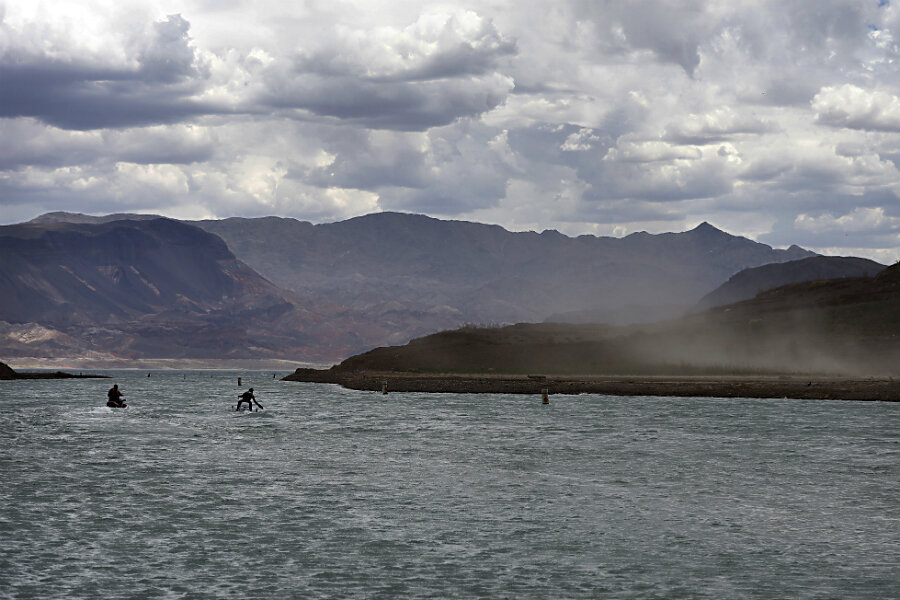Lake Mead shrinks to unveil long-submerged historic town
Loading...
Nevada's Lake Mead is drying up fast, but tourists are still flocking to the reservoir in droves to see new 'old' attractions.
“Tourism here is rebounding and the drought has brought an odd bonus: As waters recede, the lake has given up long-submerged secrets — a ghost town and B-29 bomber among them, history slowly revealed with the gentle care of an archaeologist's brush,” the Los Angeles Times reports.
The falling waterline has unveiled the ruins of the former town of St. Thomas, which were hidden for decades under the water.
Chimneys and building foundations are reappearing, reminding visitors of the town that once was. St. Thomas was founded in 1865 by Mormon settlers, but became submerged when the US government built the Hoover Dam in the 1930s.
According to CBS News, "back in 1948, that B-29 that crashed into the lake was on a secret mission. The crew of five survived, and the plane remained undisturbed for nearly 70 years."
Elsewhere around the lake, "You have new beaches, new coves, new things you can explore," Bruce Nelson, a marina owner told CBS News.
The lake’s level has fallen to 1,080 feet, from 1,226 feet just 17 years ago, with most of the decrease taking place in the last few years, according to the Brookings Institution. The military airplane used to lie under 260 feet of water, but "now it's less than 130 feet down, so divers don't need as much technical training," Joel Silverstein, who works for the only diving company allowed to tour the submerged aircraft, tells NPR.
The emergence of the little rocky islands and World War II-era planes has raised concerns by boaters about potentially deadly hazards hidden inches under the surface of the water.
“If somebody hits this at full speed, it could be a catastrophe. This could kill people easily,” Nevada State Game Warden Zachary Blackwood told the Las Vegas Review Journal about a recently revealed mound of rock and reef. “I mean hitting it at a slow speed could do major damage, especially to the vessel. If somebody lands on it, that‘s very sharp, jagged rock."
Despite the dramatic disappearing waters and emergence of hazards, Lake Mead National Recreation Area remains the sixth-most-popular destination of the nation's 407 national parks.
“Tourism here has plummeted 20 percent since 1998, when the water level began dropping, but recent trends are encouraging. Park officials say spring attendance was up 47 percent from the same time the year before. So far this summer, attendance is up 30 percent, compared with a year earlier,” the Los Angeles Times reports.







